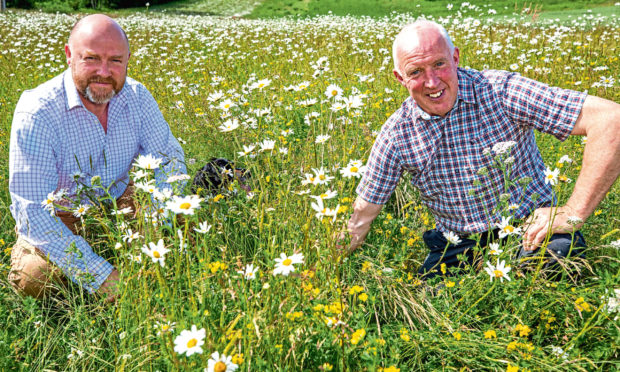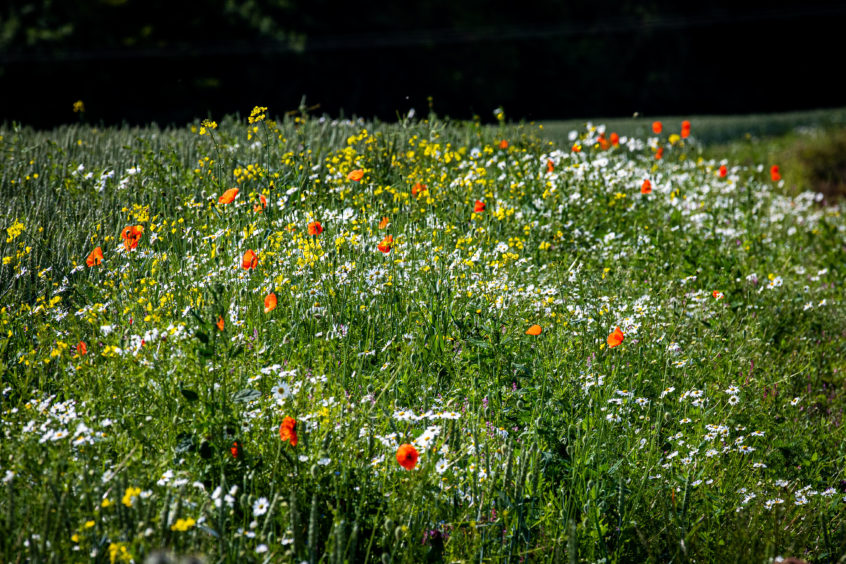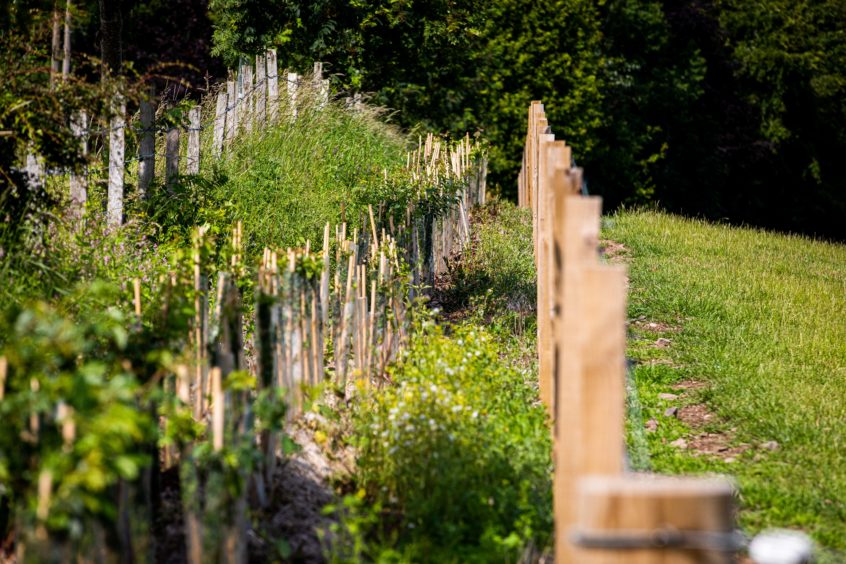A Perthshire estate is reversing the effects of half a century of intensive farming with a wide-ranging programme of environmental work.
Elcho Estate, near Perth, has been owned by the same family for about 100 years and comprises two adjacent farms of around 500 acres, with a further 200 acres of uncultivated hill ground.
The estate has been developing its biodiversity for a number of years and its participation in the Scottish Government’s Agri-Environment Climate Scheme has seen 10% of land previously cultivated to produce crops, turned over to create wildlife habitats.
One of the estate owners, Alexander Moncrieff, said: “Fields were previously ploughed to the closest edge possible, where often weed pollution was at its worst and crops were disadvantaged by growing under trees.
“These areas have been largely replaced by newly established, flower-rich grass margins of up to 20 metres in width and include different wild flower species for insect life and seed, providing food for birds in winter.
“The new margins also provide undisturbed areas for ground-nesting birds to flourish.”
Mr Moncrieff added the introduction of the margins had seen minimal reduction in farm productivity and had allowed the soil to rest, while reducing the application of nitrogen fertilisers.
As well as the field margins, other areas which were awkward for farm machinery to manoeuvre have been allocated for grasslands with a greater percentage of wild flowers which will become permanent pasture. The estate has also established two new ponds, providing a breeding environment for aquatic species.
Around 600m of hedging has been planted on both farms, with some areas of neglected hedges “pieced in” with new plants to fill the gaps.
Mr Moncrieff said: “Reinstating these hedges has been a privilege to do and something that the estate would not have been able to afford on its own.
“All the plants species used for hedge creation and restoration have been indigenous and traditional plants.”
The hedging provides a number of wildlife benefits, including nesting cover, flowers for insects and seeds for bird food.
A previous project on the estate, funded by the Forestry Commission in 2014, involved establishing new woodlands. This has reduced the carbon footprint of the estate and enabled quiet spaces for birds to nest in and enhanced insect life.
The woodlands were planted in a “tent effect” with yew and holly on the outside, cherry rowan and hardwoods, with softwoods in the centre.
The programme has seen an increase in wildlife, from insects and birds including chaffinches, bull finches and linnets, to voles which are attracting raptors such as kestrels, and for the first time in living memory, a cuckoo has been heard on the estate.
Mr Moncrieff praised the Agri-Environment Climate Scheme.
He said: “This government grant has allowed the estate to be part of the Scottish Government’s strive for environmental protection and restoration of wildlife and has benefited hugely from being allowed to participate.
“The Rural Payments Department of the Scottish Government based at Broxden in Perth, who oversee the scheme, have been unbelievably helpful with their advice and assistance.”


